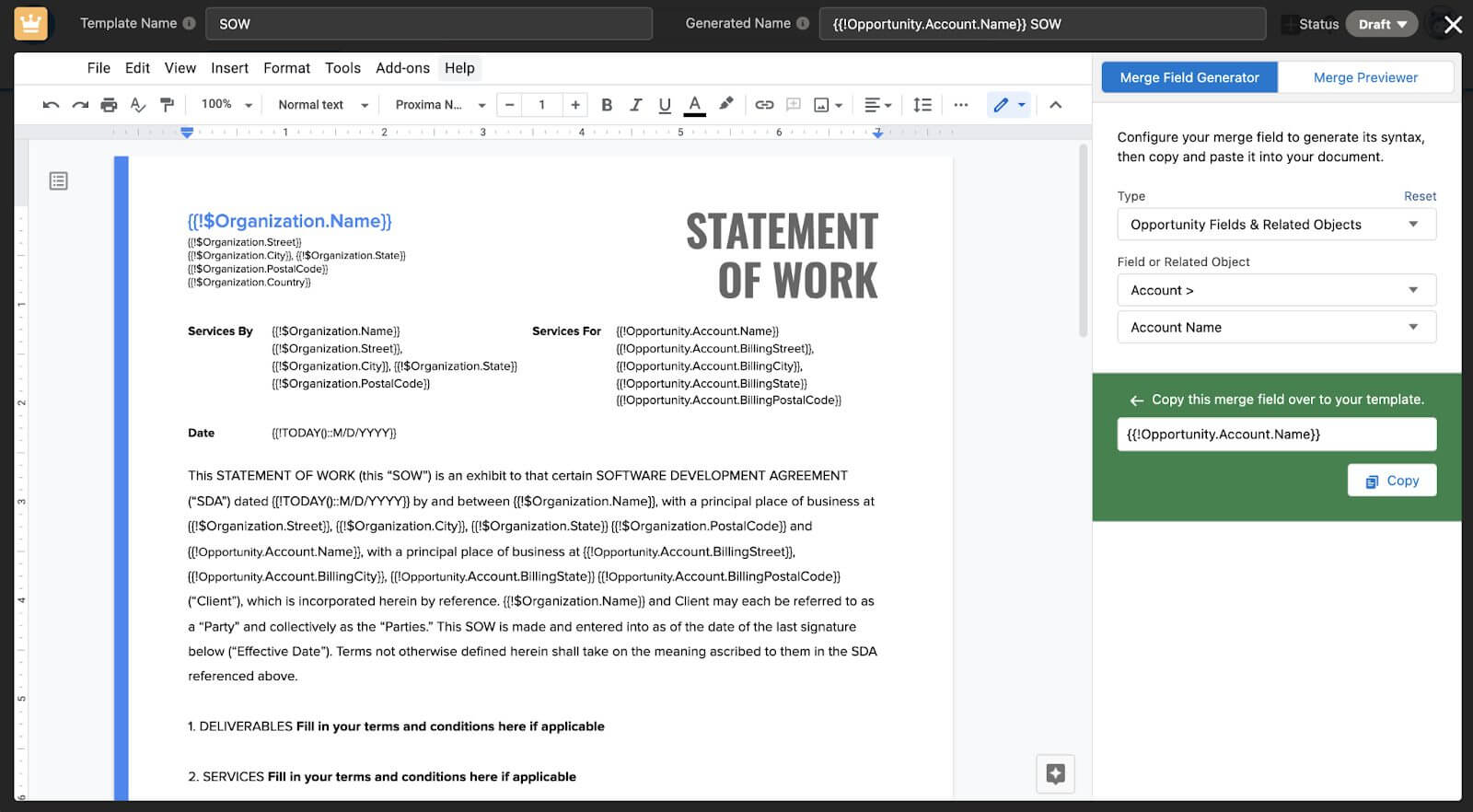Using the Template Builder
Drive Connect’s Template Builder enables you to easily build and manage templates for generating documents with Salesforce data.
How it works
Drive Connect Templates folder
Drive Connect templates are Google Docs, Google Slides and Google Sheets stored and organized in a templates folder created in your Drive. You are prompted to create this Drive Connect root folder the first time you visit Template Builder.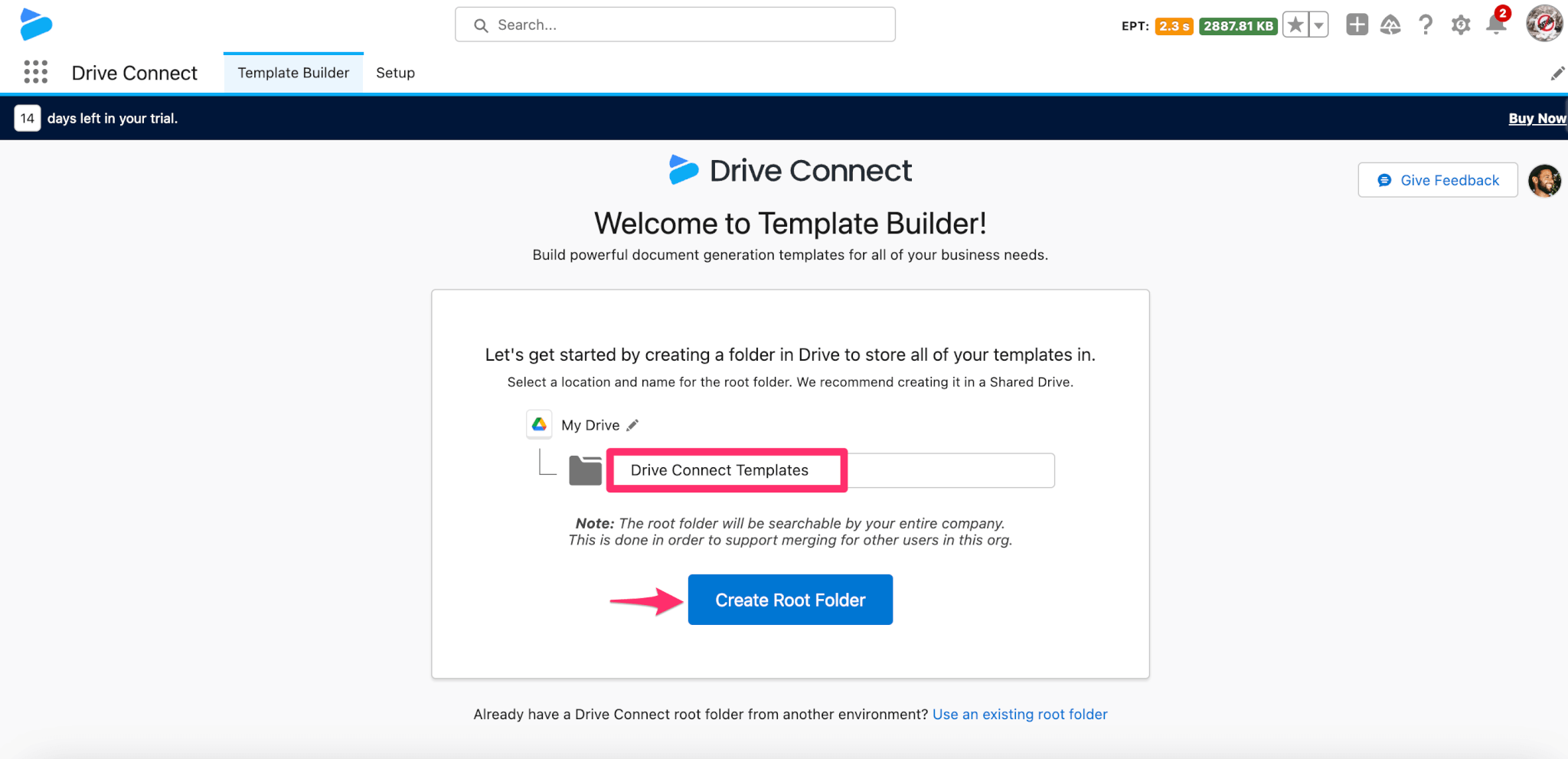
Note: For more about designating a root folder see the Creating or designating an existing template root folder article.
Once a root folder is created, you will be able to start building templates in Template Builder.
Draft and Published Templates folders
When creating a new template, 4 options will be provided to the user:
- Existing File
- New Google Doc
- New Google Slide
- New Google Sheet
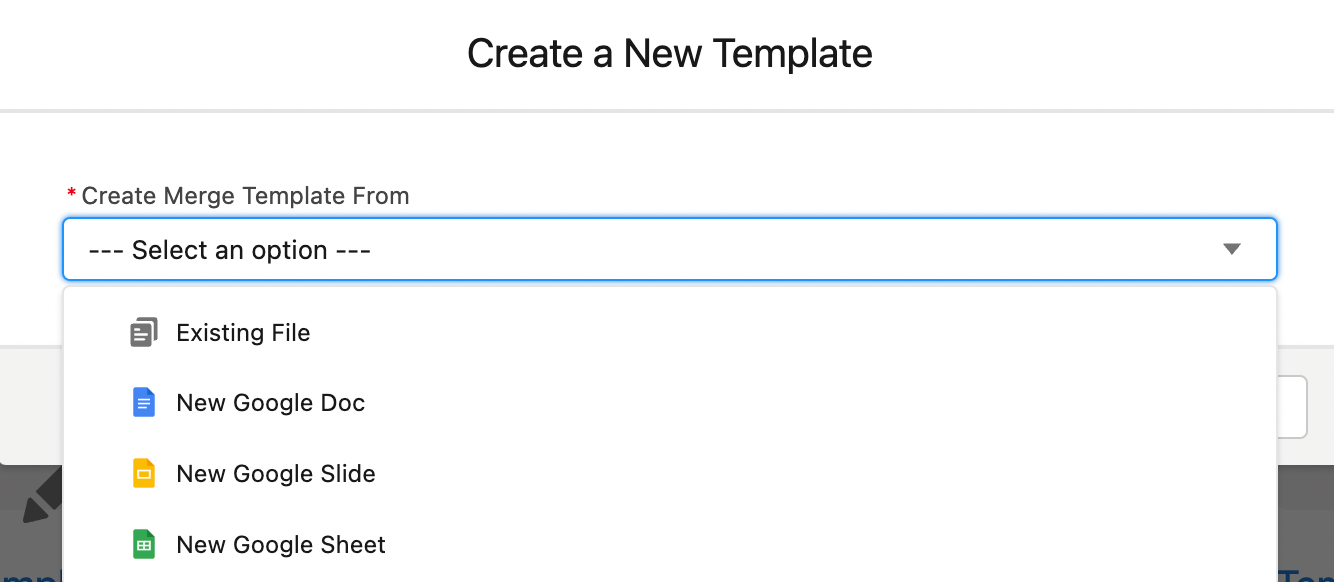
Existing File is creating a copy of the selected file with a desired name and object. If there are no existing templates for the chosen source object, then draft and published template folders will be created in the root folder for that object. For example, when creating your first template for the Opportunity object, an Opportunity Draft Templates folder and an Opportunity Published Templates folder will be created.
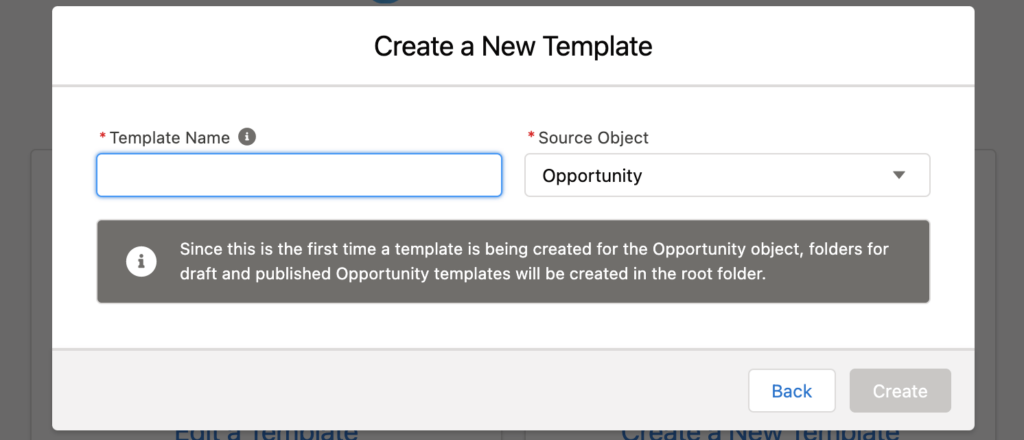

Note: Drive Connect only recognizes the draft and published templates folders created through the app so do not try to create your own versions of these folders. The same goes for templates. Only templates created through the app will work when editing templates or generating documents. This is due to the fact that we store meta data on these folders and files when we create them. We later use this meta data to interact with them.
Published Templates
Setting a template’s status to Published or Draft will move the template to the corresponding folder. The object’s Published Templates folder is what is opened when clicking New and selecting File From Template in the Drive Links component on a record page. From the picker, the user selects a template they would like to use to generate a document with that record’s data. Because the contents of the Published Templates folder is shown in the picker, you may choose to create subfolders to categorize your templates for the user.
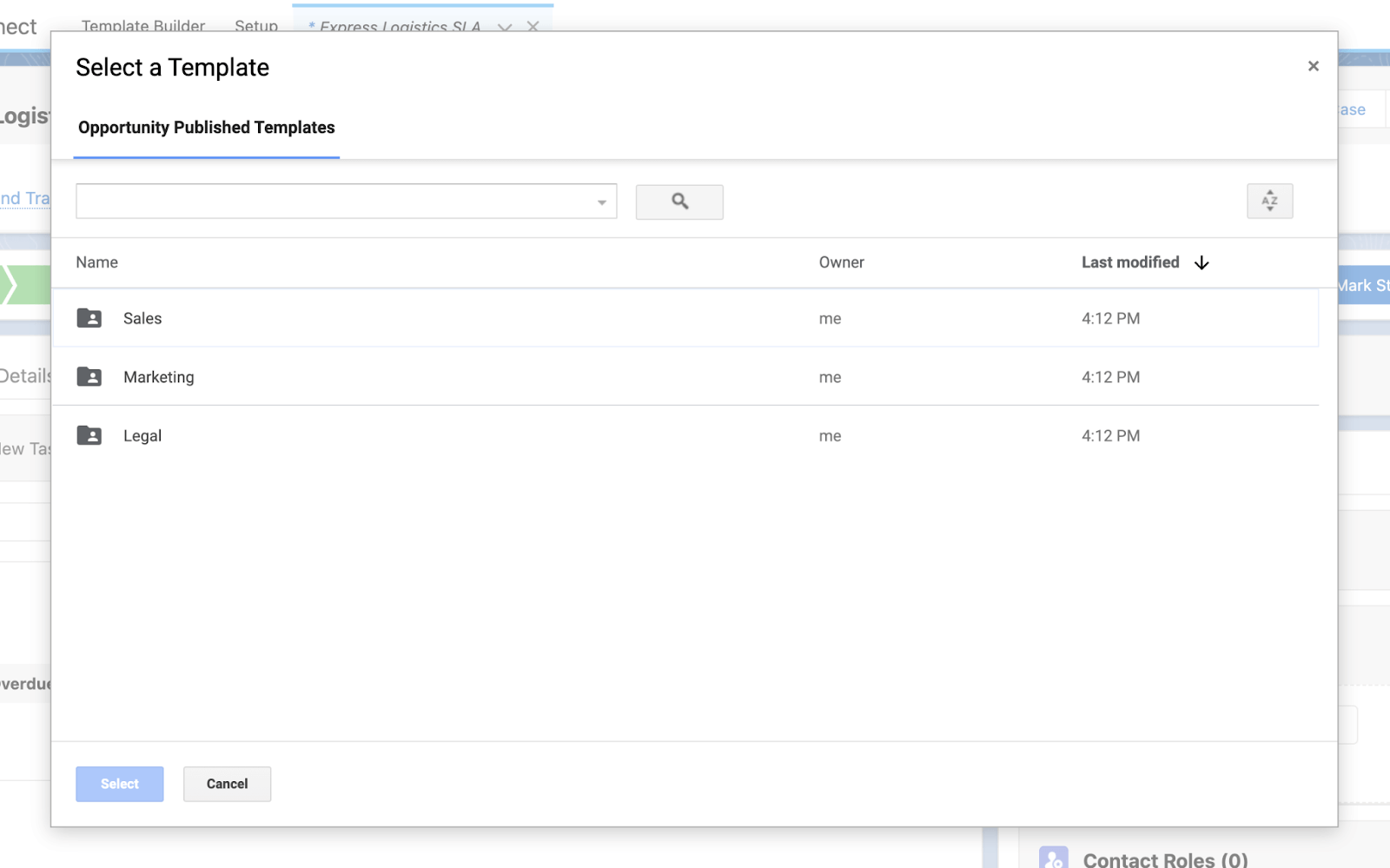
Note: For more about organizing your published templates into subfolders, see the Template folder structure article.
Editing Templates
Once you’ve created a template or have selected an existing one to edit, you will be brought to the template editor. The template editor is where you can publish or unpublish templates, generate merge fields to use in the templates, and even preview a merge with data from an actual record in your org.
